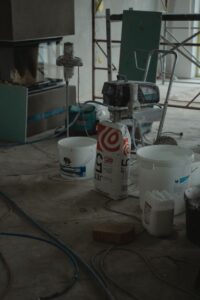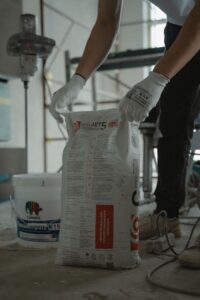You renovate a kitchen by creating a plan, preparing the area, and setting up electrical and plumbing. You then work on installing plasterboards, painting them, and setting up your cabinets and flooring.
The stages involved in a kitchen renovation or kitchen remodel can be quite daunting, particularly for people who are new to them. The important thing is to understand the process experts follow with their kitchen designs so you’ll know if your chosen contractor is doing it the right way and in the proper order.
In this post, we will discuss the main steps for a successful kitchen renovation from start to finish, discussing the correct order of trades.
Steps in Renovating a Kitchen
These are the steps professional kitchen renovation providers do when renovating a kitchen:
Come Up With a Plan
Before diving into your kitchen remodel or renovation, create a comprehensive plan that aligns with your vision and budget. Don’t rush to replace fixtures without proper planning. Think about hiring a professional, particularly if you’re inexperienced with such projects.
Consider the scope of the work, ranging from a simple cosmetic update to a complete overhaul involving layout changes and permits. Set objectives based on your preferences and goals.

Prepare the Kitchen
With your plan in place and scope defined, it’s time to begin the demolition phase. Remove outdated elements like vinyl flooring, worn-out range hoods, and old cabinets. For smaller projects, prepare walls or remove old splashbacks.
You can go about renting a large dumpster to easily dispose of construction debris. You can learn more about the top kitchen renovation tips to consider here.
Work on Electrical and Plumbing
Prioritise plumbing and electrical work in the early stages of your kitchen renovation, even if you don’t need functional appliances or lighting yet. With cabinets removed and walls exposed, this is a great time to address pipes and wires. Waiting could lead to inconvenient drilling or cutting into new cabinets or plasterboard.
For safety reasons, hiring licenced tradies to do the electrical and plumbing work in your kitchen is crucial.
Hang Your Plasterboards
Before beginning the installation of plasterboards, ensure precise measurements and gather all the necessary tools and supplies. You’ll need a T-square, taping knives, plasterboard tape, screws, a screw gun, a plasterboard saw, a sanding pole, a mixing paddle, and a dust mask.
Allocate time for clean-up, as plasterboard dust can be persistent. Use a shop vacuum to effectively remove the dust before proceeding further.

Paint Your Plaster
The painting stage brings your vision to life and is relatively simple. You can choose your paint colours and complete the painting yourself in a single day. Consider the colour and style of the cabinets you plan to install and the desired ambiance. If you feel overwhelmed, use paint swatches and embrace the trial-and-error process.
Professional consultations are available if needed, providing expert guidance without breaking the bank.
Set Up Cabinets and Flooring
Opinions differ when it comes to installing cabinets or flooring first. Ultimately, it comes down to the discretion of your builder. While some experts prefer cabinets first for a clean look, others prioritise flooring for functionality.
Keep in mind that cabinet delivery may take weeks or months, so plan accordingly.
